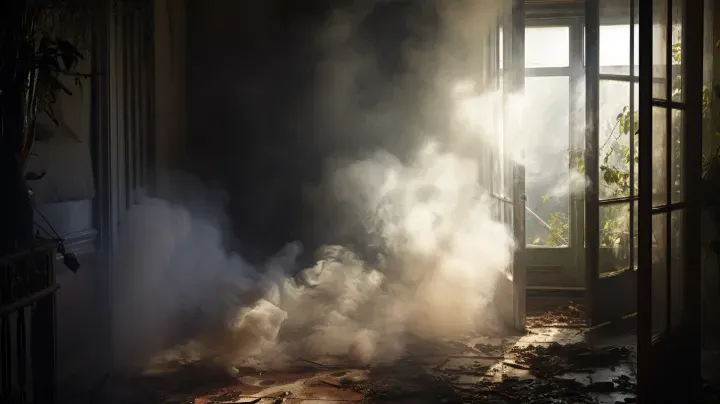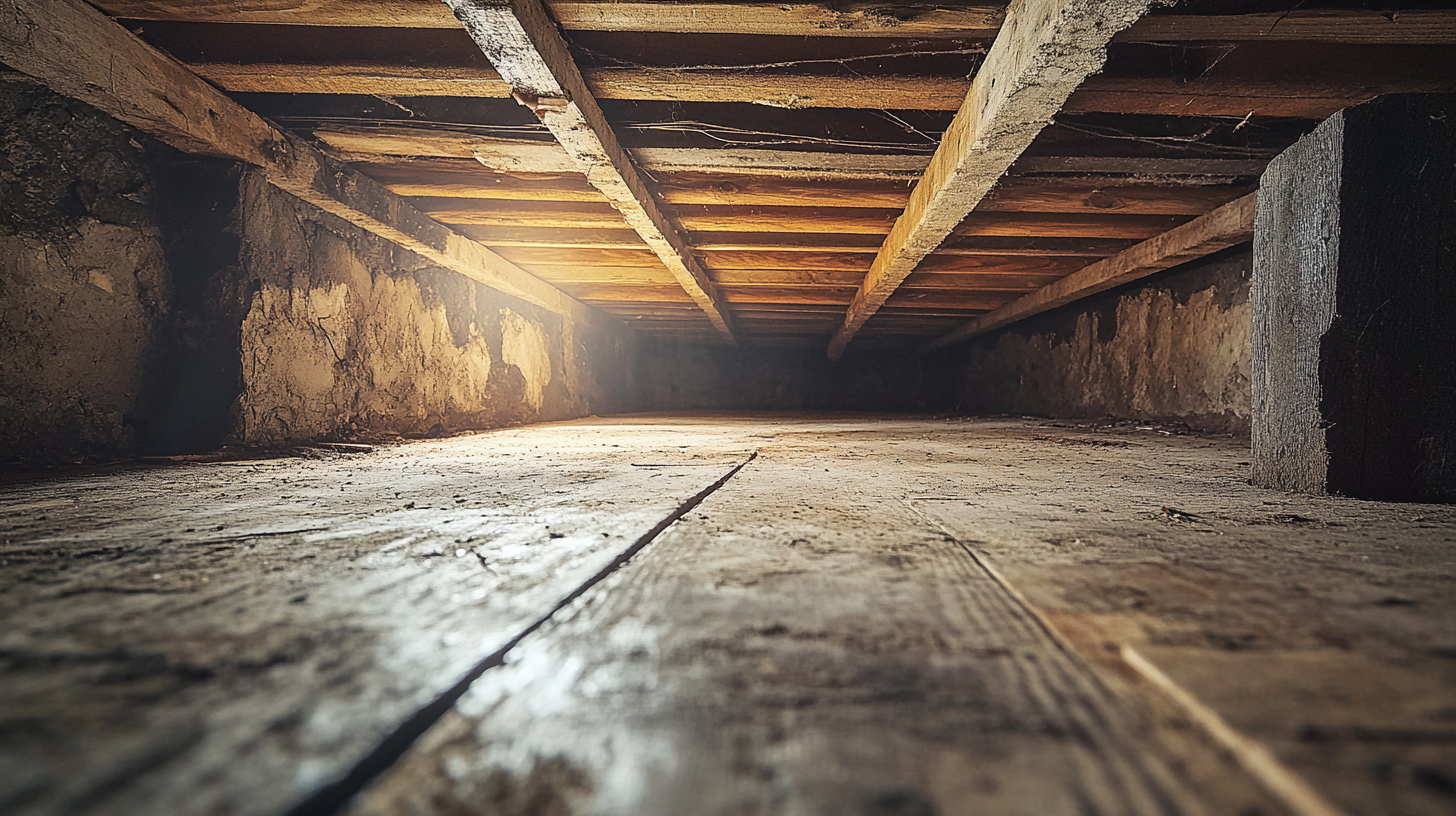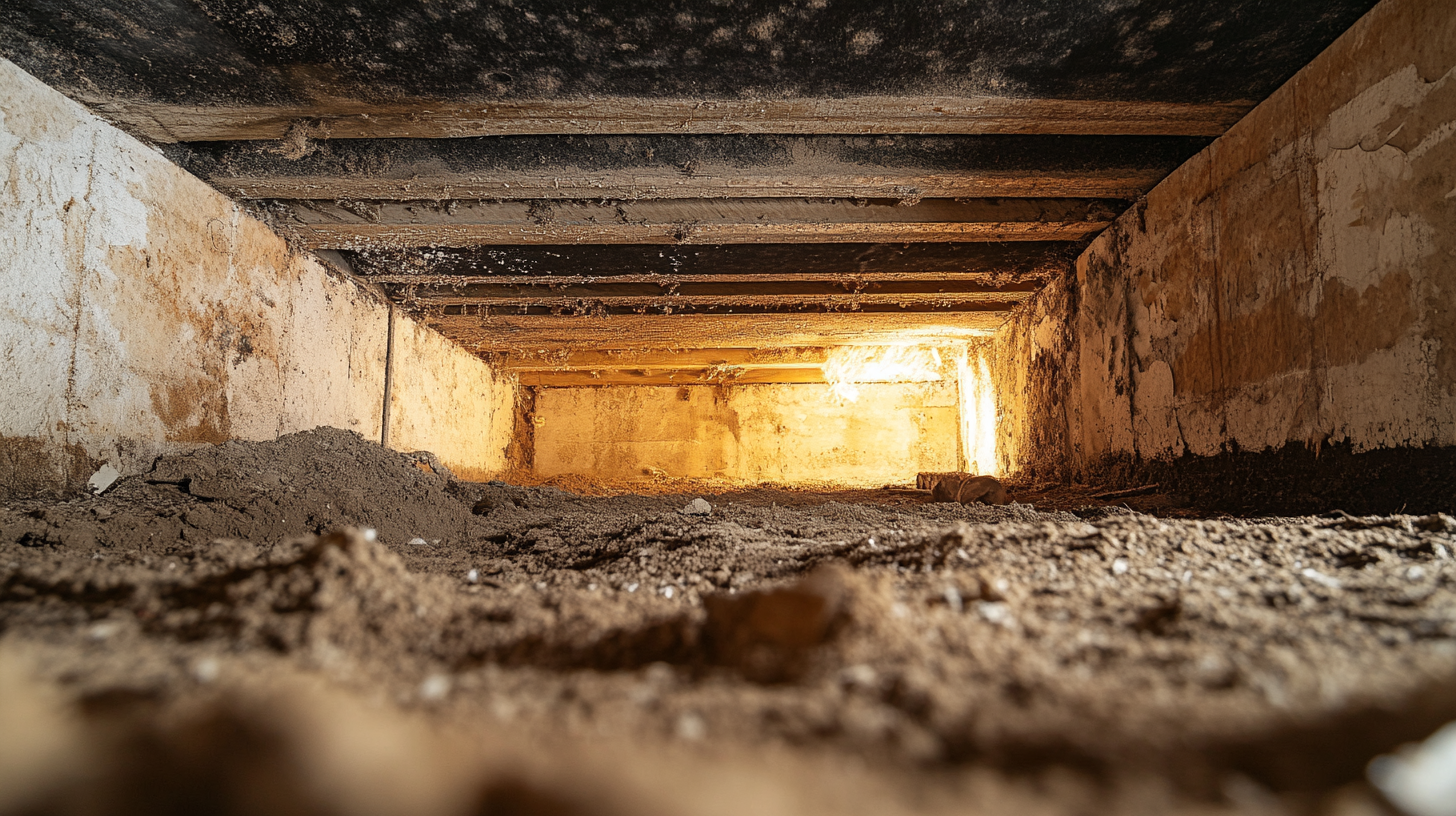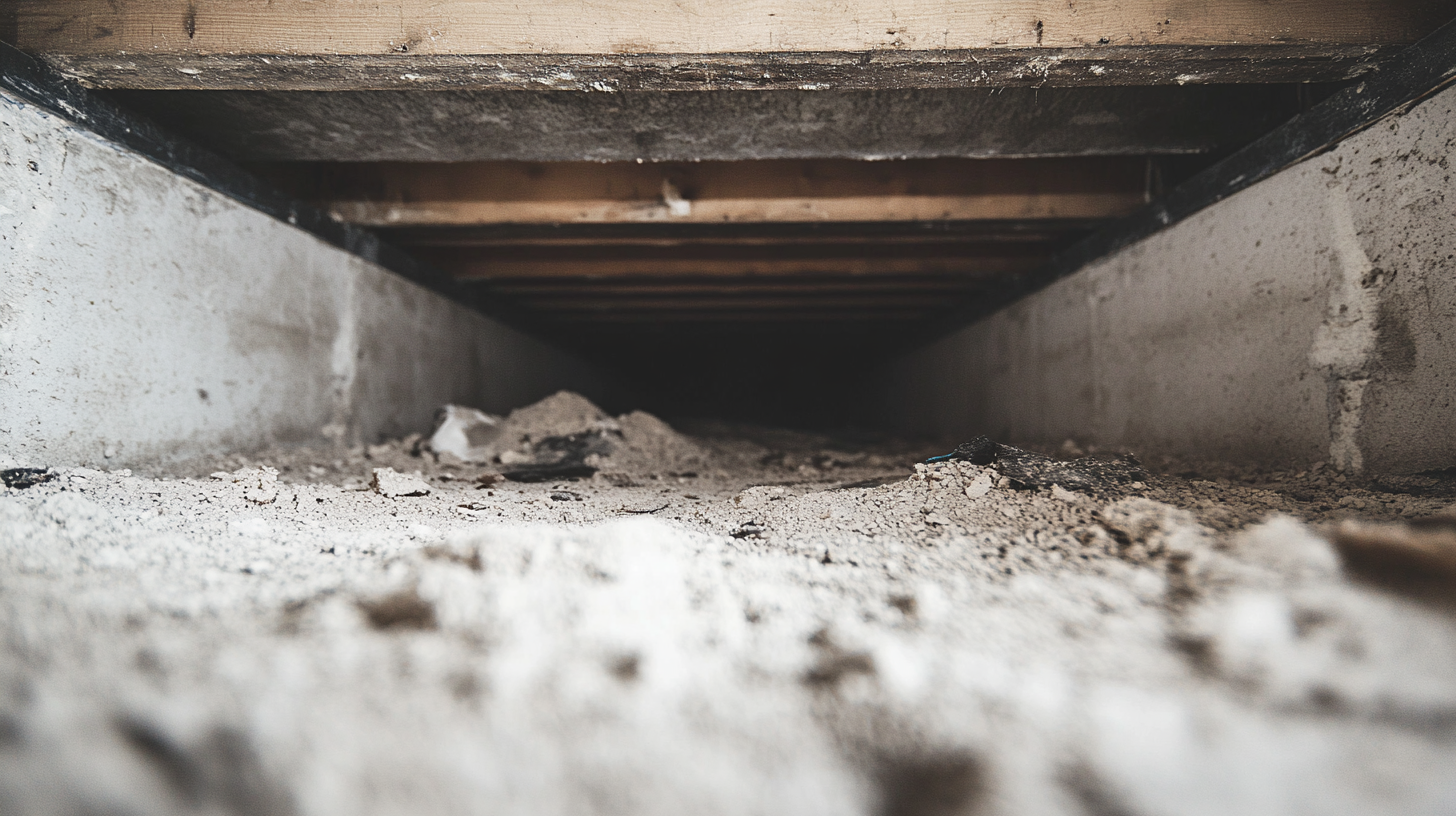Smoke Damage and Mental Health

When we think of smoke damage, the immediate image that comes to mind is often one of charred walls, soot-covered belongings, and the acrid smell of burnt materials. However, the impact of smoke damage extends far beyond these physical manifestations. This blog aims to shed light on both the physical and psychological impacts of smoke damage, with a special focus on the often-overlooked mental health aspects related to such incidents.
Smoke damage, a consequence of fires ranging from minor accidents to major disasters, can have a profound effect on individuals' health and well-being. Physically, it poses risks such as respiratory problems, skin irritation, and long-term exposure can even lead to serious conditions like cancer. But the psychological toll of smoke damage is equally significant and less visible. The trauma of experiencing a fire, the stress of lost possessions, and the disruption of normal life can have lasting effects on mental health.
In commercial settings, the impact of smoke damage can ripple through a business, affecting not just the physical infrastructure but also the morale and mental health of employees. In residential scenarios, families may grapple with a sense of loss and insecurity, alongside the daunting task of restoration and return to normalcy.
This blog delves into the multifaceted nature of smoke damage, exploring how it affects individuals physically and psychologically. We will discuss the immediate and long-term health risks, the emotional and mental challenges faced by those affected, and the importance of addressing these aspects in the recovery process. Our goal is to provide a comprehensive understanding of smoke damage's impact, highlighting the need for a holistic approach to recovery that considers both physical restoration and mental health support.
Join us as we explore the unseen scars of smoke damage and underscore the importance of acknowledging and addressing the mental health aspects in the wake of such incidents.
Understanding the Link Between Smoke Damage and Mental Health
The aftermath of smoke damage extends beyond physical repairs and cleanups; it profoundly impacts the mental health of those affected. This section explores the psychological impact of smoke damage incidents and discusses the potential long-term mental health effects.
Psychological Impact of Smoke Damage Incidents
Experiencing smoke damage, whether in a home or a workplace, can be a deeply distressing event. Here’s an exploration of the associated mental health challenges:
- Exploration of the Stress, Anxiety, and Trauma Associated with Experiencing Smoke Damage:
- Immediate Stress and Anxiety: The sudden disruption, potential loss of property, and safety concerns can lead to acute stress and anxiety.
- Trauma from the Incident: Particularly in cases where the smoke damage is due to a fire, the event can be traumatic, leading to symptoms similar to post-traumatic stress disorder (PTSD).
- Uncertainty and Loss: The uncertainty about the extent of damage, costs of repair, and loss of personal belongings can contribute to ongoing stress and emotional distress.
- Displacement Anxiety: If the damage requires temporary relocation, the disruption of normal life and routines can exacerbate feelings of anxiety and instability.
Long-Term Mental Health Effects
The mental health impact of smoke damage can persist long after the physical signs have been addressed. Here’s a discussion on potential long-term effects:
- Discussion on Potential Long-Term Mental Health Issues:
- Post-Traumatic Stress Disorder (PTSD): In severe cases, individuals may develop PTSD, reliving the traumatic event through flashbacks and experiencing heightened anxiety and emotional distress.
- Depression: The aftermath of smoke damage, especially if it involves significant loss, can lead to depression, characterized by prolonged feelings of sadness, hopelessness, and a lack of interest in previously enjoyed activities.
- Anxiety Disorders: Ongoing worries about safety, financial burdens, and future risks can lead to anxiety disorders, where the individual remains in a state of heightened anxiety long after the incident.
- Impact on Children and Vulnerable Individuals: Children, the elderly, and those with pre-existing mental health conditions may be particularly susceptible to long-term psychological effects.
Understanding the link between smoke damage and mental health is crucial for providing comprehensive support to those affected. It highlights the need for mental health considerations to be integrated into the response and recovery processes following smoke damage incidents.
Immediate Mental Health Responses to Smoke Damage
The immediate aftermath of smoke damage can be a tumultuous period, marked not only by physical loss and disruption but also by significant emotional and psychological stress. Understanding how to cope with these responses and the importance of seeking support is crucial. This section discusses the emotional responses to loss and disruption caused by smoke damage and outlines strategies for coping and resilience building, as well as the importance of seeking support.
Coping with the Aftermath
In the wake of smoke damage, individuals may experience a range of emotional responses and challenges. Here are some strategies for initial coping and resilience building:
Emotional Responses to Loss and Disruption:
- Feelings of shock and disbelief immediately following the incident.
- Grief and sadness over the loss of personal belongings or damage to one’s home or workplace.
- Anxiety and stress about the cleanup process, financial implications, and future safety.
Strategies for Initial Coping and Resilience Building:
- Acknowledging Feelings: Allow yourself to experience and express your emotions in a healthy way.
- Routine Establishment: Try to maintain or quickly re-establish routines to provide a sense of normalcy and stability.
- Self-Care Practices: Engage in self-care activities, including adequate rest, healthy eating, and physical activity.
- Community and Social Support: Stay connected with friends, family, and community members for emotional support.
- Mindfulness and Relaxation Techniques: Practices like meditation, deep breathing, or yoga can help manage stress and anxiety.
Seeking Support
Seeking emotional and psychological support in the aftermath of a smoke damage incident is vital for long-term well-being.
- Importance of Seeking Emotional and Psychological Support:
- Professional Counseling: Consider seeking professional counseling or therapy, especially if you're experiencing overwhelming stress, anxiety, or symptoms of depression.
- Support Groups: Joining support groups with others who have experienced similar incidents can provide a sense of community and shared understanding.
- Utilizing Resources: Look for resources offered by local community organizations, mental health services, or disaster response teams.
- Children and Vulnerable Individuals: Pay special attention to children and vulnerable individuals who might need additional support to process the incident.
Understanding and addressing the immediate mental health responses to smoke damage is as crucial as dealing with the physical aspects. Acknowledging emotional responses, employing coping strategies, and seeking support are key steps in navigating the aftermath of such incidents.
The Role of Community and Social Support
In the aftermath of smoke damage, the role of community and social support becomes invaluable. Not only do they provide practical help, but they also offer emotional and psychological support that is crucial for recovery. This section explores how community response and solidarity can aid in mental health recovery and the importance of leveraging social networks during the recovery process.
Community Response and Solidarity
The collective response of a community can significantly impact the recovery process for those affected by smoke damage. Here are examples of how community support can be instrumental:
Examples of How Community Support Can Aid in Mental Health Recovery:
- Organizing Fundraisers and Donations: Communities often come together to organize fundraisers or collect donations for those affected, providing financial relief and a sense of solidarity.
- Volunteer Efforts for Cleanup and Restoration: Community volunteers can assist in cleanup efforts, reducing the physical and emotional burden on those directly affected.
- Emotional Support and Encouragement: The presence of a supportive community provides emotional comfort and reassurance, helping individuals feel less isolated in their experience.
- Shared Experiences and Empathy: Community members who have experienced similar incidents can offer empathy and understanding, which is vital for emotional healing.
Leveraging Social Networks for Recovery
Social networks – including family, friends, and community groups – play a pivotal role in the recovery process. Here’s how they can be leveraged effectively:
The Role of Family, Friends, and Community Groups:
- Family and friends can offer a listening ear, emotional support, and practical assistance.
- Community groups, including faith-based organizations and local clubs, can provide a network of support, resources, and information.
Accessing Community Resources and Support Services:
- Local community centers and social services often have programs and resources specifically designed to assist in disaster recovery situations.
- Support services may include counseling, legal advice, and guidance on accessing financial assistance.
- Community events and gatherings can foster a sense of belonging and collective healing.
The role of community and social support in the aftermath of smoke damage is multifaceted. It encompasses practical help, emotional support, and the fostering of resilience and solidarity. Recognizing and utilizing these networks can significantly enhance the recovery process, both in terms of physical restoration and mental health recovery.
Long-Term Mental Health Care and Recovery
Recovering from the mental health impacts of smoke damage is a long-term process that often requires both professional support and personal management strategies. This section introduces various therapy options and mental health services available for those affected by smoke damage, as well as techniques for ongoing self-care and management.
Professional Mental Health Support
Professional support plays a crucial role in addressing the psychological aftermath of smoke damage. Here’s an introduction to therapy options and services:
Introduction of Therapy Options and Mental Health Services:
- Counseling and Psychotherapy: These services offer a safe space to process emotions and develop coping strategies. Therapists may use techniques like cognitive-behavioral therapy (CBT) to help manage stress and anxiety.
- Group Therapy: Participating in group therapy provides an opportunity to share experiences with others who have faced similar challenges, fostering a sense of community and support.
- Psychiatric Care: For those experiencing severe mental health issues, such as major depression or PTSD, psychiatric care, including medication management, may be necessary.
- Online and Teletherapy Services: These provide accessible options for those who may face barriers to in-person therapy.
Ongoing Self-Care and Management
Long-term mental health care also involves personal strategies and routines. Here are some techniques for ongoing care:
Techniques for Long-Term Mental Health Care:
- Regularly engage in activities that promote relaxation and stress relief, such as exercise, hobbies, or spending time in nature.
- Maintain a healthy diet and sleep routine to support overall well-being.
Importance of Routine, Self-Care, and Mindfulness Practices:
- Establishing a routine can provide a sense of stability and normalcy, which is especially important in the recovery process.
- Self-care practices, such as taking time for oneself and engaging in enjoyable activities, are vital for mental health maintenance.
- Mindfulness and meditation can be effective in managing stress and anxiety, helping individuals stay grounded and present.
Long-term recovery from the mental health effects of smoke damage is a journey that often requires a combination of professional support and personal care strategies. Emphasizing the importance of both these aspects can lead to a more holistic and effective recovery process.
Prevention and Preparedness
Preventing and preparing for potential smoke damage incidents is not just about safeguarding physical property but also about reducing the mental health impact such events can have. Proactive measures and preparedness can significantly mitigate the psychological toll of these incidents. This section explores strategies for minimizing mental health impacts through preparedness and offers tips for building resilience in individuals and communities.
Reducing Mental Health Impact Through Preparedness
Being prepared for potential smoke damage incidents can help alleviate some of the stress and anxiety associated with such events. Here are strategies for minimizing the mental health impact:
- Strategies for Minimizing Mental Health Impact Through Proactive Measures and Preparedness:
- Emergency Planning: Develop and regularly update an emergency plan for smoke damage incidents. Knowing what to do can reduce panic and helplessness during an actual event.
- Regular Drills and Education: Conduct regular drills and educate family members or employees on emergency procedures to build confidence and familiarity with response actions.
- Insurance and Documentation: Ensure adequate insurance coverage for property and possessions. Keep an inventory of valuables for ease of claim processing, which can reduce financial stress post-incident.
- Mental Health Resources: Be aware of available mental health resources, including counseling services and support groups, and how to access them if needed.
Building Resilience
Fostering resilience in individuals and communities is key to better handling future incidents of smoke damage. Here are some tips:
Tips for Fostering Resilience in Individuals and Communities:
- Encourage Open Communication: Create an environment where feelings and concerns about potential incidents can be openly discussed. This can help in addressing fears and uncertainties.
- Strengthen Community Ties: Strong community networks can provide crucial support during and after incidents. Engage in community activities and build relationships with neighbors and local organizations.
- Promote Mental Health Awareness: Educate about the importance of mental health and the impact of traumatic events like smoke damage. Awareness can lead to better coping strategies and reduced stigma in seeking help.
- Develop Personal Coping Strategies: Encourage individuals to identify and practice personal coping mechanisms, such as mindfulness, exercise, or hobbies, which can be beneficial in stressful situations.
Prevention and preparedness are key components in reducing the mental health impact of smoke damage incidents. By implementing proactive measures and fostering resilience, individuals and communities can be better equipped to handle the challenges posed by such events.
FAQs
Contact Fast Response Cleaning & Restoration Today!
Fast Response Cleaning & Restoration will do everything we can to ensure your experience with us is excellent.
Request A FREE Estimate
Request A FREE Estimate Form
CHECKOUT RECENT POST



Have an Emergency? We're Here to Help!
When it comes to disaster cleanup, we are a seasoned veteran in the industry and have helped hundreds of property owners just like you.
Our disaster recovery teams are available 24-7 to quickly clean up and repair disasters of all types.
